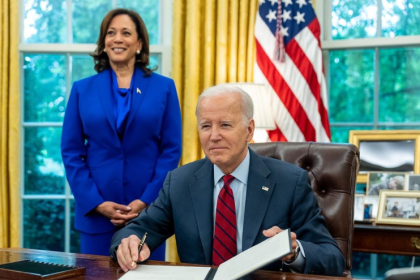Apprenticeships Benefit Individuals and Employers

WASHINGTON – The Department of Labor’s apprenticeship programs benefit individuals seeking to master skills while gainfully employed, and provides employers with the talent needed to fill the current workforce shortage, according to two Congressmen yesterday.
Apprenticeships differ from paid internships in that they are not temporary, but last a number of years.
Vocational training has been” stigmatized” throughout the years in the U.S., with the idea that everyone has to get a college degree to get a job with a living wage, and that working “with your hands” somehow shows a “deficiency,” said Rep. David McKinley, R-W. Va, during a fireside chat at a Brookings Institution event entitled, “The business case for expanding apprenticeships: Federal and employer perspectives.”
As a country, “we need to get past that,” pointing out the “pocketbook” value of the “earn and learn” component of these programs. Getting hands-on training under a mentor in applicable skills while earning a living wage and receiving the transferable certification by the DOL means individuals can make “a lot of money instantly,” he said.
“If you’re going into the apprenticeship program, you are going to come out of that… maybe making $70 to $80 thousand a year and zero debt as compared to going to college for four years,” McKinley said.
Apprenticeship programs put choice back in the individual’s hands – whether they are in early education like high school or adults seeking a new career opportunity, Sen. John Hickenlooper, D-Colo. agreed. It also allows employers to fill the ever-growing gap in skilled versus unskilled workers by “getting a workforce with the skills and preparation that can actually do what is needed,” he said.
The Congressmen’s remarks followed a panel discussion on the National Apprenticeship Act of 2021 that passed in the House earlier this month and would grant $3.5 billion, disbursed throughout the next five years, towards the DOL’s Office of Apprenticeship programs – Registered Apprenticeships, pre-apprenticeships and youth apprenticeships. The Act also seeks to expand these programs beyond the trades – construction, utilities and manufacturing – they were initially intended for in its inception after the Great Depression.
Individuals want to study without being bogged down by debt for the rest of their working life and employers want to have skilled workers to be successful in the current market. The DOL’s Office of Apprenticeship programs “[bridges] the gap between where we need to be and where we are today,” said Obed Louissaint, senior vice president of transformation and culture at IBM.
The country was already facing digitalization before the pandemic, Louissaint said, and the tech industry saw numerous jobs going unfilled. The “digital transformation” of the country has accelerated now, along with the need for a workforce to meet the demand for these modern skills. Despite the millions of Americans facing long-term unemployment in the current recession, “[they] can’t find these jobs,” he added.
Louissaint said it was a “business imperative to close the skill gap” and encouraged employers across all sectors of the economy to not “shy away” but “lean” into the programs. Fifty percent of IBM’s current jobs no longer require four-year degrees, he added, noting IBM has seen a “high level of retention of the individuals [they] have invested in.”
Fellow panelist and CareerWise Colorado CEO Noel Ginsburg agreed, adding that a system is needed that “serves all of our people” to address inequality issues in the U.S.
“You can start with apprenticeship and end with a PhD,” he said. “It’s not a limiter, it actually expands opportunity.”
























